With hot temps and afternoon thunderstorms here to stay, summer is underway. We’re also half-way through the year—whoa. July is a celebration of nature in full bloom. Farmers markets are bountiful and blueberries (finally!) are in season. Mid-summer is an opportunity to welcome new fruits and veggies to the table. As you peruse the produce aisle, take advantage of what catches your eye. Try new recipes, diversify your plate, and support your local farmers. Today, we’re diving into produce in season—July version. Consider this is your July 2023 produce guide: a cheat sheet for what’s in season this month.
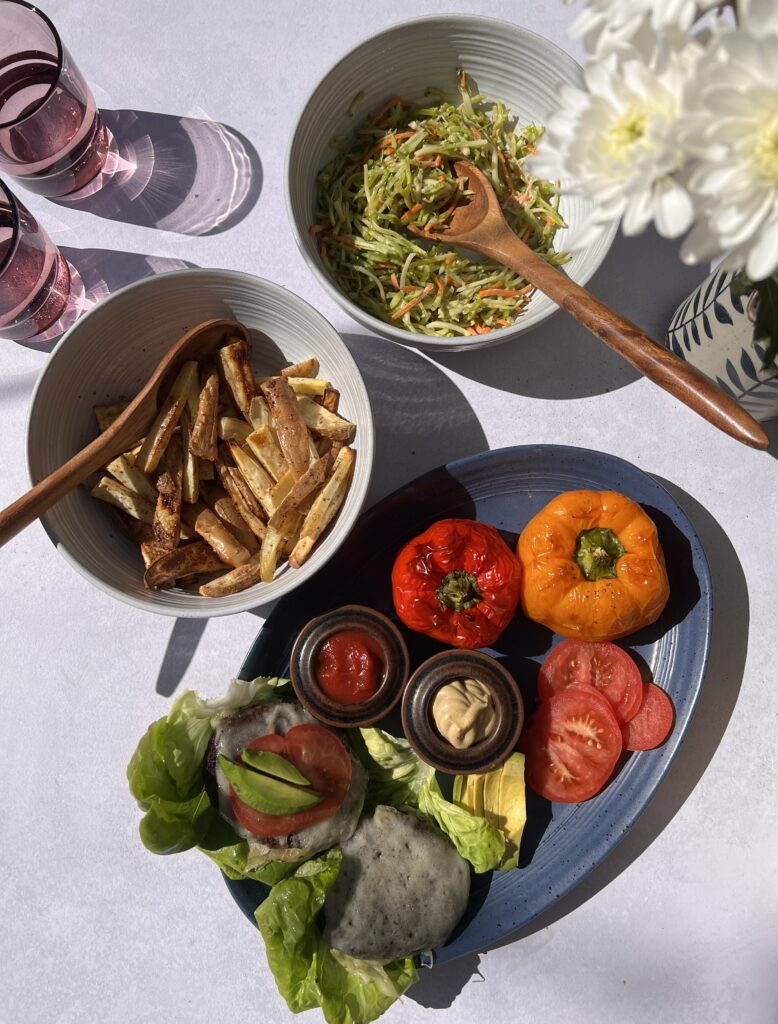
WHAT IS SEASONAL EATING?
When it comes to eating with the seasons, July is a wonderful month to start. There’s an abundance of sweet, flavorful produce available. But, what is seasonal eating? It’s a sustainable way of eating. And it has a variety of health benefits! This lifestyle encourages you to focus on produce in season (for your geographic area, specifically). There are many reasons to eat with the seasons, but these are two:
FOODS GROWN OUT OF SEASON NEED RIPENING AGENTS
When foods are grown out of season, they can’t follow their natural growing and ripening rhythms. In order for certain fruits and vegetables to be available year-round, ripening agents are used. These include chemicals, gases, and heat processes. If you want berries in the winter, instead of opting for conventional berries (sprayed with pesticides), grab a bag of frozen organic berries instead. Mix them into yogurt, oatmeal, smoothies, or make homemade berry jam.
FOODS GROWN IN SEASON Are More nutritious
There’s no denying that food in season is delicious. It’s also more nutritious and cheaper. Citrus hits different in the winter. Juicy tomatoes are summer’s candy. You get the gist. Naturally-ripened fruits and vegetables—grown and picked in season—are typically full of flavor and nutrients.
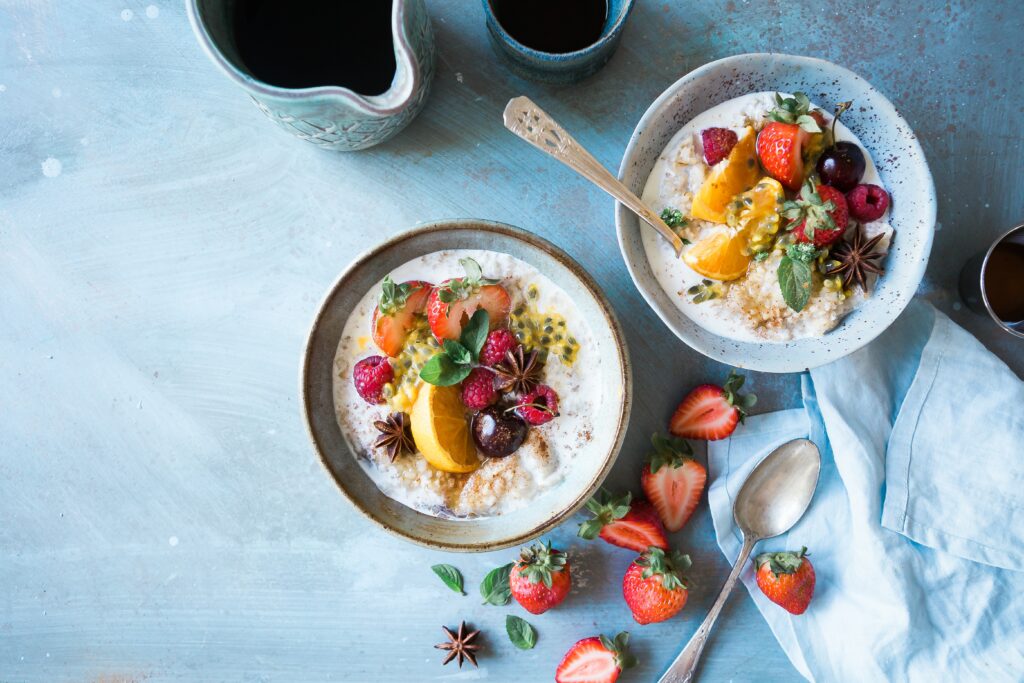
How to stay cool in july with Ayurveda
July is a hot, hot month. Especially here in Denver. Take a holistic approach to staying cool this summer with these Ayurvedic tips. Ayurveda, a natural system of medicine, encourages focusing on cooling ingredients and plenty of hydration. Ideally, cut back on spicy, sour, and warming foods (think: fried and processed), vinegar, and too much alcohol or red meat. Instead, favor astringent, sweet, and bitter tastes. Try cooking in the morning—instead of in a hot kitchen during midday. According to Ayurveda, below are the foods to eat during the summer:
- Light or cool foods, like salads
- Vegetables like leafy greens, summer squashes, cauliflower and cucumber
- Grains like basmati rice, oats, quinoa and barley
- Legumes, like mung beans, black beans, garbanzo beans, and split peas
- Water-rich and sweet fruits, such as melons, grapes, berries, peaches and pears
- Cooling spices, like cilantro, mint, dill, fennel and coriander
- Oils like coconut, avocado oil and ghee (see here for healthy oils to use!)
- All unrefined sweeteners in moderation (except honey and molasses)
Last but not least, eat at regular meal times—roughly every 3-4 hours. This helps minimize pitta accumulation (acidity, headaches, heat rashes, inflammation, and irritability). Said differently: keep your blood sugar balanced!
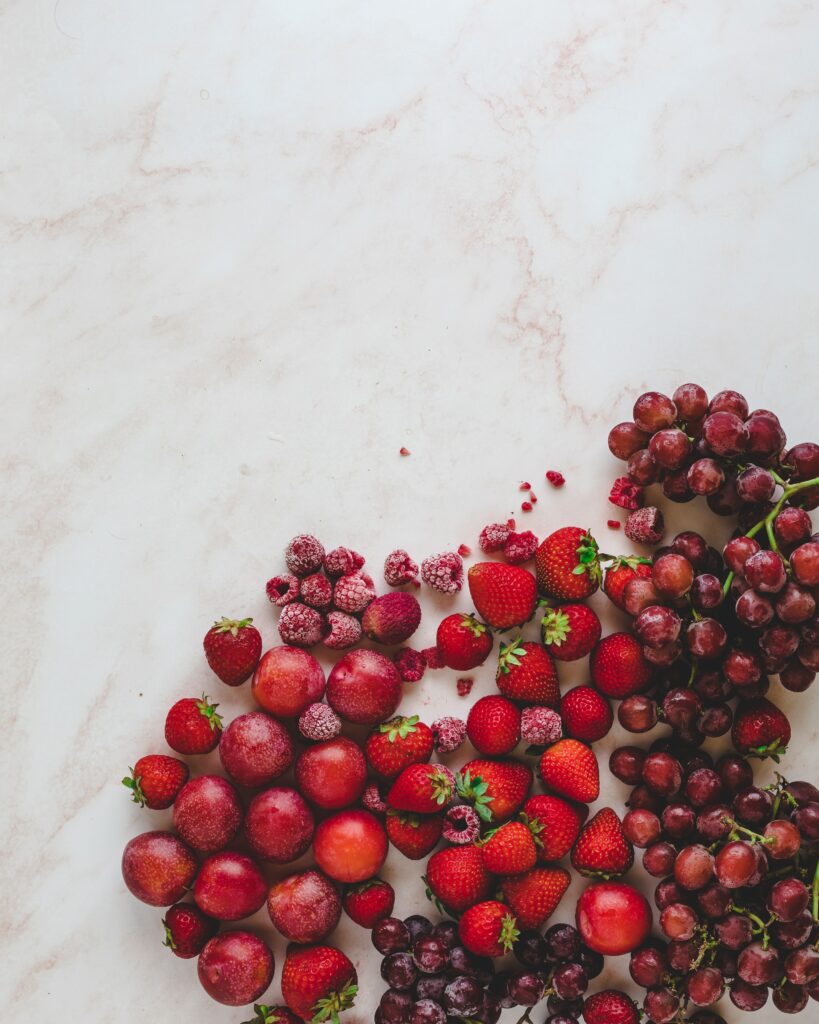
July 2023 Produce guide
Without further ado, let’s dive into this July produce guide. July is all about mid-summer fare. Take what’s in season in June and add the following: corn, watermelon, peppers, and summer squash. Get ready for berry pies, crumbles, and cobblers. In the spirit of keeping up with spring’s most delicious produce, below are the ingredients to focus on in July.
Apricots
We’re nearing the end of apricot season, so enjoy these sweet, juicy stone fruits while you can. Apricots resemble a peach or plum in taste, with a yellow-orange flesh. They have a lightly fuzzy skin and a large seed inside. Look for apricots that have a deep orange-gold color—rather than those that are pale orange or yellow. They should be plump and firm, with just a little softness to them.
Blackberries
These delicious fruits offer several health benefits, and they capture the essence of summer in their sweetness. They’re packed with vitamin C, fiber, and antioxidants. Enjoy them on ice cream, yogurt, in smoothies, in salads, or atop cottage cheese.
Blueberries
‘Tis the season for berries—from blueberries to strawberries, it’s time to take advantage of nature’s candy. When you buy fresh blueberries, most come in a plastic or cardboard carton. Look for berries that are firm, dry, and smooth-skinned. Like bell peppers, you don’t want shriveled or soft spots. Although size isn’t an indicator of peak harvest, color is. Blueberries should be a deep purple-blue hue. They’re wonderful for skin health, too!
cantaloupe
Every wonder how to tell if a cantaloupe is fresh? Same. The best way to pick a cantaloupe is by smell. It should have a sweet, slightly musky scent. A good cantaloupe also feels heavy for its size, along with a rind that resembles raised netting. When you press on the stem (or where the stem was removed), it should give slightly when pressed with your thumb.
Corn
Here in Colorado, corn is just coming into season. Now’s the time to grill it and enjoy in a salad with chicken, fish, steak, or tofu.
Cucumbers
Cucumbers require a long growing season, but most are ready for harvest by June. Come July, they’re in peak season. Look for firm cucumbers, without blemishes or soft spots (which can indicate that they’ve started to rot). Cucumbers should be dark green without any yellow spots. My favorite are Persian cucumbers—they’re delicious in salads, with hummus, and pickled!
Green Beans
I just picked up fresh green beans at our local farmers market—evidence that they’re currently in season. They’re tender enough to eat raw, but you can also boil or steam them. I love eating freshly steamed green beans with ghee and sea salt. They also pair well with lemon, potatoes, shallots, and fennel.
Mangoes
When it comes to this July 2023 produce guide, don’t forget about mangoes! The most commonly consumed fruit (worldwide), mangos are high in vitamins A and C. There are many, many different varieties, but mangoes are best when they have a sweet aroma and feel slightly soft, yet firm to touch. Mangoes are delicious in smoothies, salads, salsa, and alongside a protein-forward breakfast.
Peppers
Nothing beats a bell pepper at the peak of the growing season―which runs from July through November―when it’s crisp, juicy, and full of sharp flavor. I’m currently on a grilled pepper kick, but they’re perfect with hummus, baba ganoush, or tzatziki. Add them to salads or sandwiches. Stuffed peppers are so satisfying, too.
Raspberries
All hail the mighty raspberry. Juicy, perfectly sweet, and a wonderful addition to everything from salads to a bowl of ice cream, raspberries are as versatile as they are nutrient-rich. Choose berries that have a bright red color. Raspberries should always be refrigerated and kept dry until just before serving. Be sure to properly store your raspberries. See here for my producing storing tips!
summer squash
July is the perfect time to savor just-harvested summer squash. It’s peak season is June through late August. I love adding summer squash to stir-fries, frittatas, and fish en papillote.
Tomatoes
These juicy, versatile fruits (yes, fruits!) are irresistible in the summer. This is my favorite way to eat heirloom tomatoes, but this caprese salad with avocado is a weekly staple.
Watermelon
Last but not least, watermelon. Sweet and succulent, a good watermelon is the best thirst-quenching treat on a hot summer day. Watermelons don’t continue to ripen once they’re cut from the vine, so you want to be careful when choosing. Check where the stem used to be and make sure it’s brown (green means it was picked too early!). Then, look at the other side for a yellow patch. The ripest watermelons have the yellowest spots. Lastly, a ripe watermelon will feel heavy for its size. It should give a little when you gently squeeze it. A rock-hard watermelon is underripe.
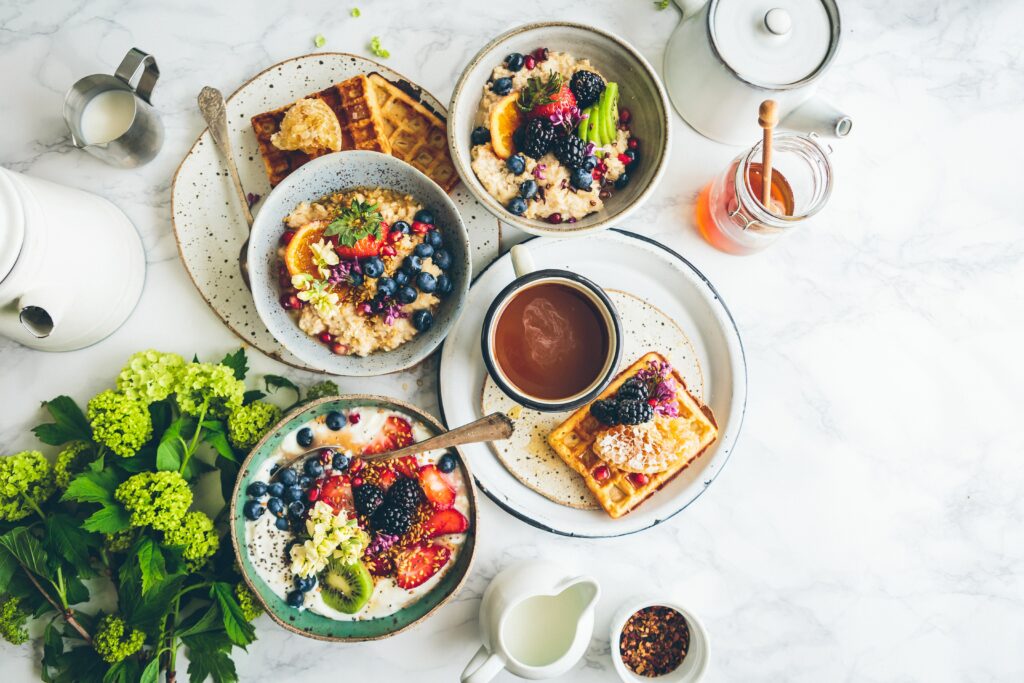
July Recipe inspo
In a recipe rut? Here are a few meal ideas to get you started! Ultimately, summer cooking is all about simplicity—let the flavors and textures of summer’s seasonal produce shine.
Grilled watermelon salad
Ingredients: 4-5 slices watermelon, 1 cup arugula, 2 tablespoons feta cheese, 1 tablespoon chopped red onion, balsamic glaze, olive oil, salt, and pepper.
Instructions: Grill watermelon slices for a few minutes on each side. Arrange the grilled watermelon on a bed of arugula. Top with crumbled feta cheese, thinly sliced red onion, drizzle with balsamic glaze, olive oil, and season with salt and pepper.
Summer berry smoothie bowl
Ingredients: 1/2 cup mixed berries (strawberries, blueberries, raspberries), 1 small frozen banana, 1/2 cup unsweetened coconut milk, granola, shredded coconut, and fresh mint leaves (optional).
Instructions: Blend mixed berries, frozen banana, Greek yogurt, and coconut milk until smooth. Pour the mixture into a bowl. Top with granola, shredded coconut, fresh berries, and mint leaves. Enjoy!
corn on the cob with herbed ghee
Ingredients: 2-3 ears of corn on the cob, 2-3 tablespoons ghee, 1/4 cup fresh herbs (such as chives, cilantro, or basil), garlic powder, salt, and pepper.
Instructions: Preheat the grill. Mix softened ghee, chopped fresh herbs, garlic powder, salt, and pepper in a small bowl. Grill the corn on medium heat, turning occasionally, until it is lightly charred. Remove from the grill and generously brush the herb butter mixture over the corn.
Lemon garlic shrimp skewers
Ingredients: 1/4-1/2 pound shrimp, 2 tablespoons lemon juice, 1-2 garlic cloves (minced), olive oil, salt, pepper, and skewers.
Instructions: In a bowl, combine lemon juice, minced garlic, olive oil, salt, and pepper. Add the shrimp to the bowl and marinate for about 15 minutes. Thread the shrimp onto skewers and grill over medium-high heat until they turn pink and slightly charred, typically around 2-3 minutes per side. Serve with additional lemon wedges.
caprese pasta salad
Ingredients: 2 cups lupini bean pasta, 1 cup cherry tomatoes (halved), 1/2 cup fresh mozzarella balls (ciliegine), fresh basil leaves (chopped), balsamic glaze, olive oil, salt, and pepper.
Instructions: Cook the pasta according to package instructions. Drain and rinse with cold water. Combine the cooked pasta, cherry tomatoes, mozzarella balls, and chopped basil leaves in a large bowl. Drizzle with olive oil, balsamic glaze, and season with salt and pepper. Toss gently to combine.
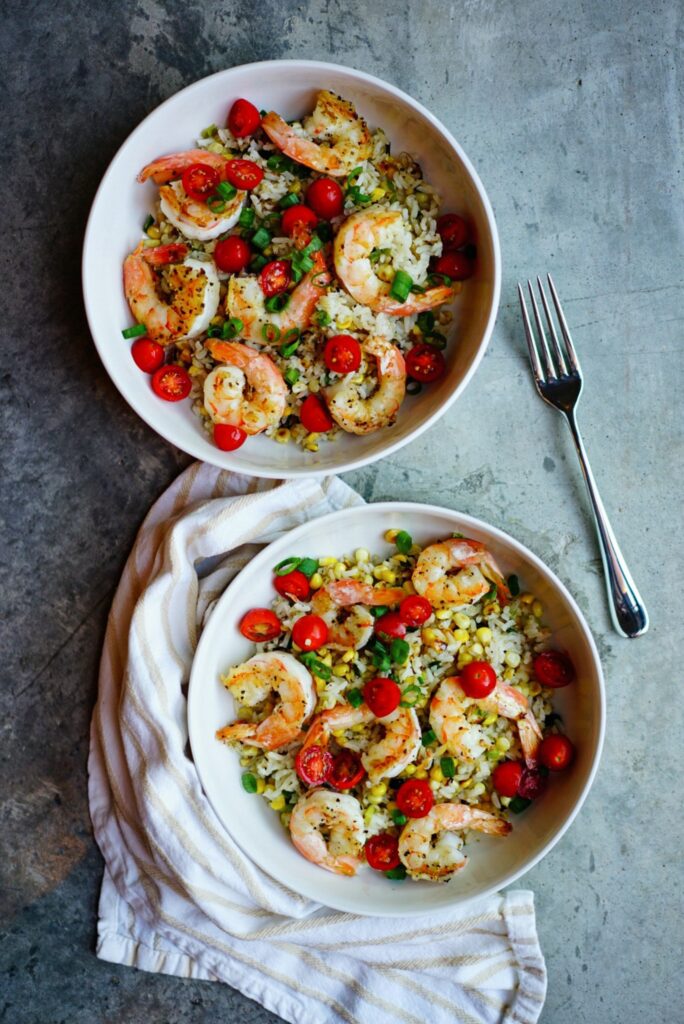



Leave a Reply